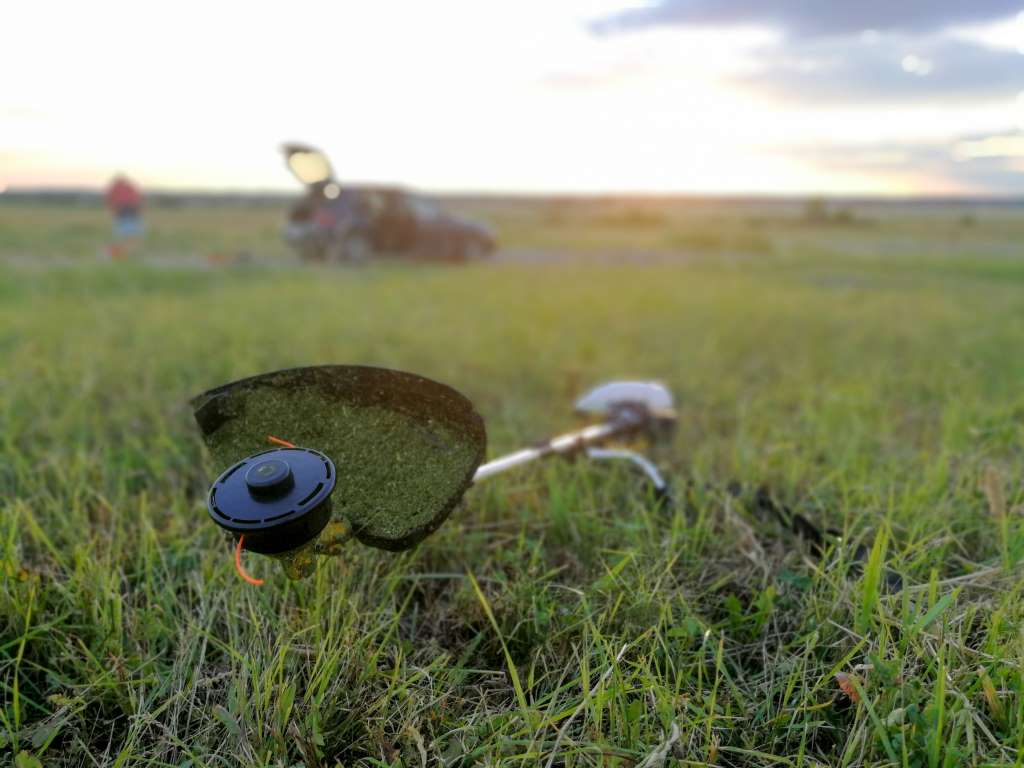Imagine you’re standing in your overgrown garden, grass strimmer in hand, ready to tackle the wilderness. That’s where this guide comes in.
It’s here to help you understand your grass strimmer, take you through safety measures, prep your tool, perfect your strimming technique, and even touch on maintenance and troubleshooting.
By the time you’re done, you’ll know how to use a grass strimmer and be able to do it safely and efficiently.
Let’s bring that garden back to life, shall we?
Understanding Your Grass Strimmer

The first step in using your grass strimmer effectively is understanding its various components and functions. Familiarize yourself with the cutting head, where the magic happens. Here, the nylon line spins at high speed to slice through grass and weeds.
Then there’s the motor, which powers the spinning. On a petrol strimmer, you’ll find it at the top; for an electric, it’s found at the bottom. The shaft connects these two, acting as a conduit for power.
Don’t forget the handle, your control centre. You’ll adjust speed, power, and angle from here. It’s critical to know your machine before you start.
Once this is down, you’ll be strimming like a pro.
Safety Measures While Strimming
After getting to know your grass strimmer, it’s time to focus on safety measures to ensure you’re strimming without harm. First, always wear protective gear. Safety goggles, sturdy gloves, and long trousers shield you from flying debris. Never strim barefoot or in open-toed shoes. Instead, wear sturdy boots with slip-resistant soles.
Before starting, check your strimmer for damage. Damaged cords or loose parts can cause accidents. Clear your working area of stones, sticks, and other debris that might become dangerous projectiles. Always strim during daylight, when you can see clearly.
Prepping the Strimmer for Use
Before you start strimming, it’s essential to prep your grass strimmer properly for safe and effective use.
First, ensure the strimmer is clean and free from debris; this prevents potential blockages. Then, check the cutting line. If it’s worn or broken, you’ll need to replace it. Always use strimmer-specific lines, as other materials could cause damage.
Next, inspect the spool. Make sure it’s securely attached and not damaged. A loose or broken spool can be a safety hazard.
If you’re using a petrol strimmer, check the fuel levels. If you’re using an electric one, ensure the cord is intact and the battery, if cordless, is fully charged.
Lastly, don’t forget to put on your safety gear. Now, you’re ready to strim.
Perfect Strimming Technique
Once you’ve prepped your strimmer and donned your safety gear, it’s time to hone your technique for the perfect strim. Begin by holding the strimmer steady, parallel to the ground. Your grip should be firm yet relaxed.
Start from the edge of the area you wish to strim, moving inwards in a back-and-forth motion. This ensures an even cut and prevents you from missing any spots.
Push the strimmer forward, then pull it back towards you, maintaining a steady pace. The key is consistency; avoid rushing or slowing down abruptly.
Maintenance and Troubleshooting
Now that you’ve mastered the perfect strimming technique, learning about maintaining your grass strimmer and troubleshooting common issues is crucial.
Regular cleaning is essential. Remove debris from the cutting head after each use to prevent build-up. Inspect your strimmer’s line regularly; replace it if it’s worn or thin.
Is your Strimmer not starting? Check the fuel. If it’s old, you’ll need to replace it. The spark plug may be dirty or damaged if the engine’s still unresponsive. Ensure the air filter isn’t clogged as well.
Cutting performance below par? You’ve likely got a dull or damaged blade.
Frequently Asked Questions
What Type of Fuel Is Best for a Petrol-Based Grass Strimmer?
When choosing fuel for your petrol-based grass strimmer, it’s best to opt for a mix of petrol and two-stroke oil. This blend ensures optimal performance and longevity for your strimmer’s engine.
Can a Grass Strimmer Be Used on Different Types of Terrain?
You can use a grass strimmer on various terrains. It’s adaptable to both flat and sloped areas.
However, you’ll need to adjust your technique for efficient strimming depending on the terrain’s characteristics.
What Should I Do if My Grass Strimmer Suddenly Stops During Operation?
If your strimmer stops suddenly, don’t panic. Check if it’s out of fuel or the battery’s dead. If not, inspect for tangled grass or debris.
Still not working?
You’ll likely need to consult a professional.
Are There Any Specific Weather Conditions in Which the Use of a Grass Strimmer Is Not Advised?
Yes, it’s not advisable to use a grass strimmer in wet conditions. Rain can make the grass slippery, increasing the risk of accidents. Moreover, wet grass can clog the strimmer, hampering its performance.
Can the Same Strimmer Be Used for Both Small Residential Lawns and Larger Commercial Spaces?
Yes, you can use the same strimmer for both small and large areas. However, you’ll find it’s more time-consuming on larger commercial spaces.
It’s not the size, but the strimmer’s power that matters.
Conclusion
So, you’ve mastered your grass strimmer! Remember, always prioritize safety and keep your equipment in top shape. With proper technique and regular maintenance, you’ll have a picture-perfect lawn in no time.
Don’t be afraid of troubleshooting, it’s part of the process. Strimming isn’t just about keeping the grass neat, it’s about taking pride in your outdoor space.
Happy strimming!




